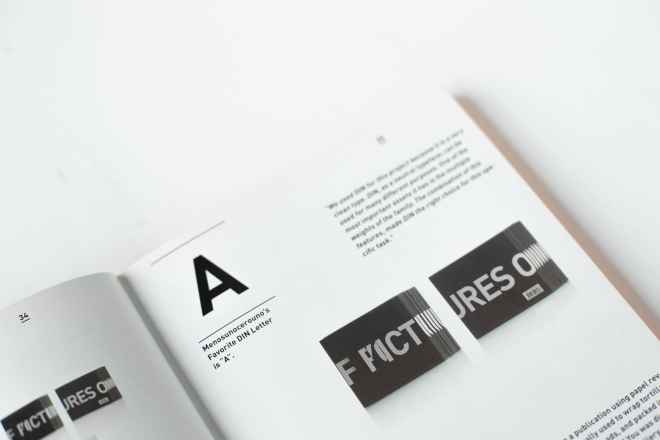Design methodologies are all over the place, with varying priorities and insights into how to make the perfect creations. Instead of focusing on one — unless that is your preference — designers and small businesses should feel encouraged to pull the highlights and best strategies from every corner, formulating a curated strategy that works for your personality and workflow. Atomic design is an entire approach that considers user interactivity and productivity, so what is the overview so you can start applying it to your work?
What Is Atomic Design?
Atomic design combines the creativity of design with the practicality of science. It is based on the book of the same name by Brad Frost, and it explains a web design framework. He urges designers to view web pages as living systems rather than a collection of stagnant pages. He took inspiration from other industries, including chemistry and industrial architecture.
The point is to view a website as a mixture of separate processes, all the way down to the atom. It engages designers to view user experience and workflow from a microlens, expanding until they understand the implications in a macro sense. Interface elements comprise pages and entire sites, so if you attempt to work with a collection of items without considering how it impacts smaller pieces, you may compromise performance or accessibility.
Another aspect of atomic design is teaching designers how to scale. Websites are moldable and infinite — bandwidth and servers permitting. So, when you take on a well-established project, you must look at it as starting from scratch. How does everything work together to provide the experience people expect from these web pages, and how can you manipulate those elements to achieve your design goals?
Just like in science, smaller parts make up atomic design. It is time to take a look at your website-creating process through a microscope.
The Five Aspects of Atomic Design
To better understand how to execute atomic design strategies, you need to unpack the facets of a web page with atomic design terminology. To do so, you must return to your high school classrooms.
Atoms
Looking at the chemistry definition of an atom will explain that it is the quintessential building block of matter. There are aspects of design that equate to this metaphor. Frost describes the atoms of web design as aspects that, if taken away, everything else would lose context and fall apart. Atoms include web elements like HTML and buttons.
Molecules
As you can see, atomic design elements build upon its essential parts. Groups of atoms form molecules. The idea is that atoms join to create more holistic and versatile web experiences, primarily when they work together to enhance each other’s strengths and properties. Examples include contact forms that incorporate atoms like buttons and fonts.
Organisms
Get enough molecules together to form any organism — like you, the designer, or your webpage. This is when the molecules diversify their utilities. The molecules work together to develop working aspects of the website, such as a storefront, interactive gallery, or navigation bar. The organisms are replicable.
Templates
This is the point when you get into non-chemistry language. Based on how atoms form molecules and molecules include organisms, you might have guessed that organisms formulate templates. A group of organisms acts like a puzzle, piecing together to create an entire contact page, complete with navigation, submission forms, text boxes, and other layout aspects.
Pages
You have officially graduated to the highest aspect of the food chain — templates construct unique pages. Though every page has a template, not all templates are alike, and sometimes, a duplicate template generates an entirely different page experience. It is the consumer-facing part that exhibits your brand and shows off all your hard work.
Applying and Experimenting With Design Components
Knowing and applying atomic design to a blank slate or long-term client are different stories. It is not as daunting as chemistry, and now that you have the primer for the design system, execution is more straightforward. First, you take all of the aspects and break them down even further:
- Raise atom awareness: Outline all of the atoms in the system.
- Forge molecular bonds: Map out how atoms connect to form molecules, noticing how some atoms flow to multiple molecular structures.
- Construct organisms: Place molecules with each other to build usable website components, like search bars and headers with logos.
- Assemble templates: Craft a layout, seeing how all organisms work together and inspire symbiotic UX.
- Finalize pages: Generate as many individual instances of templates as you need to fulfill site requirements and user intent.
Atomic design does not stop. To champion this method, gather data about how it is performing. Experiment with webpage elements based on speed, interactivity, and visitor crawl rates.
It requires developers to notice patterns in how they work and design. How can they expand their mindset to see how molecules work outside their mental constraints? What new design structures unfold because you see more connections between atoms than before? How does this utility translate to the website viewer, improving their customer journey?
Advantages of Employing Atomic Design
You may have unknowingly always thought of web design in an atomic way. You understand that if a page doesn’t function well, go back to the code, the tiniest parts that make up the whole, to discover the root of the issue. Having atomic design principles in mind provides the most considerable advantage by ensuring certainty. You always have a reusable guideline to follow when designing and problem-solving.
It increases the likelihood that you will perfect your design craft. The more you understand what makes users excited about your websites, the more you can refine the elements.
Speaking of consistency, identifying elements with atomic methodology makes everything seamless between pages. It means not only is your design process constant, but users will also develop familiarity with the site because it caters to their intuition and experience. Because the atoms and templates are not brand-specific, they are reusable. As a designer, it means you develop a consistency that translates to expectation when looking for contracts or clients.
It immediately impacts productivity and workflow, which translates to improved interfaces and user experience. Visiting users can feel clunky components when a website’s foundation is faulty or not harmonious. Using atomic ideas assures clients and yourself that visitors will have positive brand associations based on the website functionality.
Using Atomic Design to Level Up Your Work
Who knew science and creativity could blend so naturally? Consider atomic design in web development. UX helps designers and visitors equally. It encourages site optimization and prioritizes flow because it recognizes the value behind even the most minor components. It also improves productivity when drafting a website structure because you consider every aspect exactly when it should receive attention.
It layers until it creates a beautiful website. Though rebranding a website by changing a template in one fell swoop is tempting, atomic design reminds designers to take a step back to view the atoms first.


